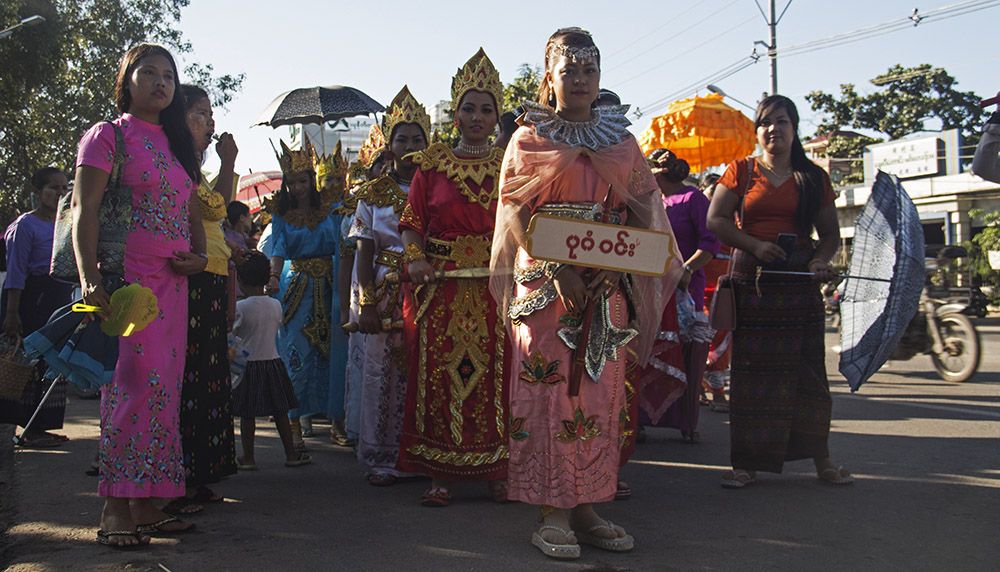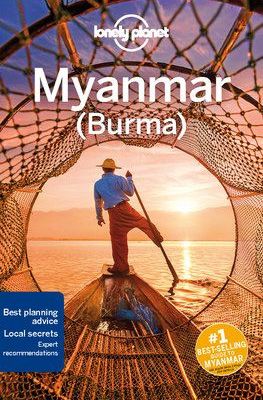Biking through Buddhist Mandalay
Mandalay, the former capital of Myanmar, is the second largest city in the country after Yangon. We find the city lovely and it is known for its cultural diversity. Half of the Burmese monks live here and the surrounding areas. The city is also a hub for the country’s major tourist attractions, including Bagan and Inle Lake.
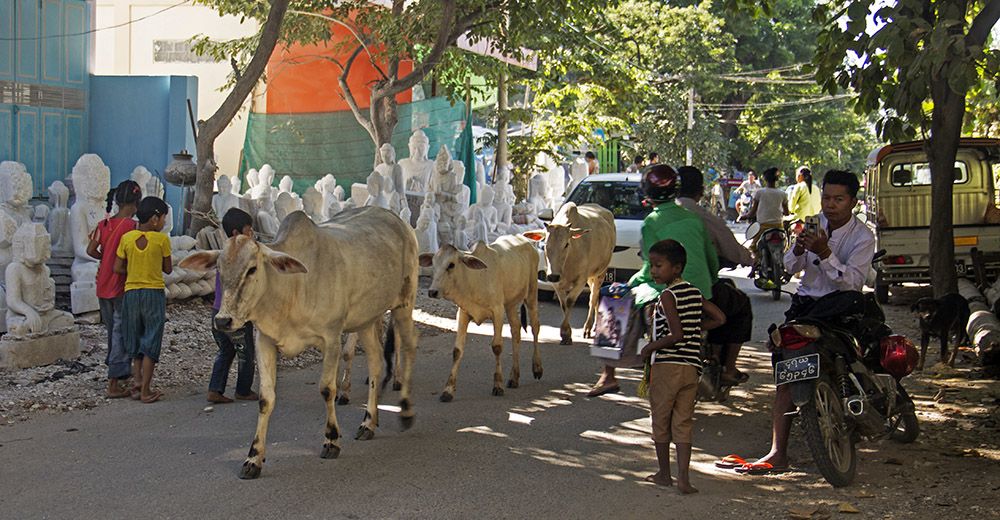
A piece of history
For many, Mandalay is synonymous with ancient Myanmar, but the striking thing is that the city is actually not that old at all. It was not until 1857 that King Mingdon Min of Burma established the city as the new capital of the kingdom of Ava. In the almost 30 years that followed, Mandalay was a city of splendour. But after a major fire the city lost part of its lustre.
During the Second World War, when the Axis powers (Germany, Italy and Japan) bombarded large parts of the city, splendour was also a thing of the past. The once beautiful Royal Palace and the large Atumashi pagoda have since been reconstructed. Fortunately, a lot of the glory days have been preserved so a visit to the city remains a must in our eyes.
The Mandalay of today is relatively prosperous by Burmese standards. The city is the centre for trade with China and the growing trade with India.
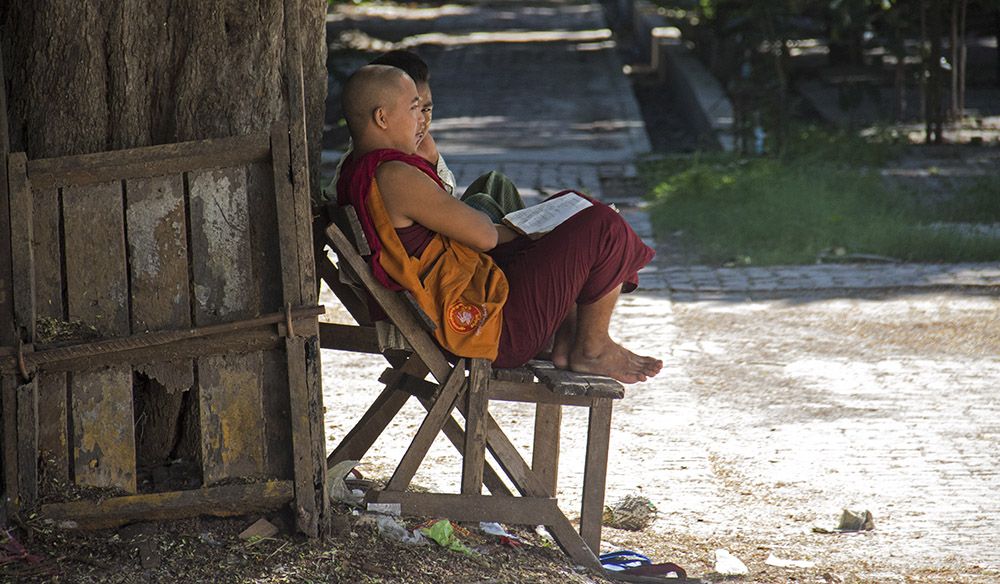
Sightseeing in Mandalay
Most sights in the big city are located to the (north) east of the Royal Palace. A limited number of them are described in more detail below. However, the other parts of the city also have very special pagodas or temples to offer. For this reason alone, we advise you to rent a bike, as we did, to really get a good impression of life in this very interesting, former capital of Myanmar.
Royal Palace
The Royal Palace is a walled city in Mandalay with a wide canal around it. The palace was built in 1861 by King Mindon and then destroyed during the Second World War. After the war, the mini-city was rebuilt and recently even renovated. Although the reconstruction is quite similar to the original, other materials were used in the construction (e.g. steel instead of the original teak). The palace contains several pavilions and rooms.
From the outside, the walled city looks impressive, though in size it is even more impressive. A walk along the canal completely around the palace takes one to two hours! If you want to go inside you can only do so at the east gate. You pay for a ticket valid for 5 days that gives access to all the, often very interesting, exhibitions. Do bring a copy of your passport!
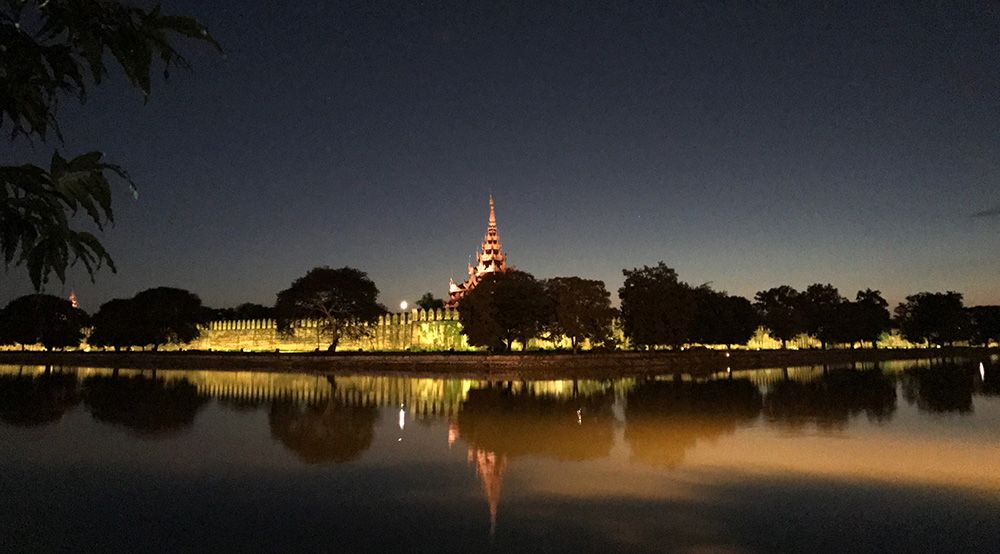
Mandalay Hill
Mandalay Hill is a 230-metre-high hill northeast of the Royal Palace in Mandalay. You might expect the hill to have taken its name from the city but it’s actually the other way around. Known for its many pagodas and monasteries, Mandalay Hill has been an important place of pilgrimage for Buddhists from Myanmar for almost two centuries.
We found the ascent of the hill to be one of the highlights of our stay in Mandalay for sure. Partly thanks to the many viewpoints where you can rest on a bench, if necessary, the climb is easy to do if you are in fairly good shape. Keep in mind that the walk from the start of the climb to the descent takes many hours. However, the final view from the top of the hill makes up for everything.
You can climb the hill via steps from the south and southeast, as well as from the west and north. We took the stairs on the south slope. At the top there are famous pagodas and temples, each with its own story. The view is best at sunset. So, be sure to start the climb on time but not too early. Don’t be surprised if you are met by many monks; they climb the hill to practice their English with foreigners at sunset.
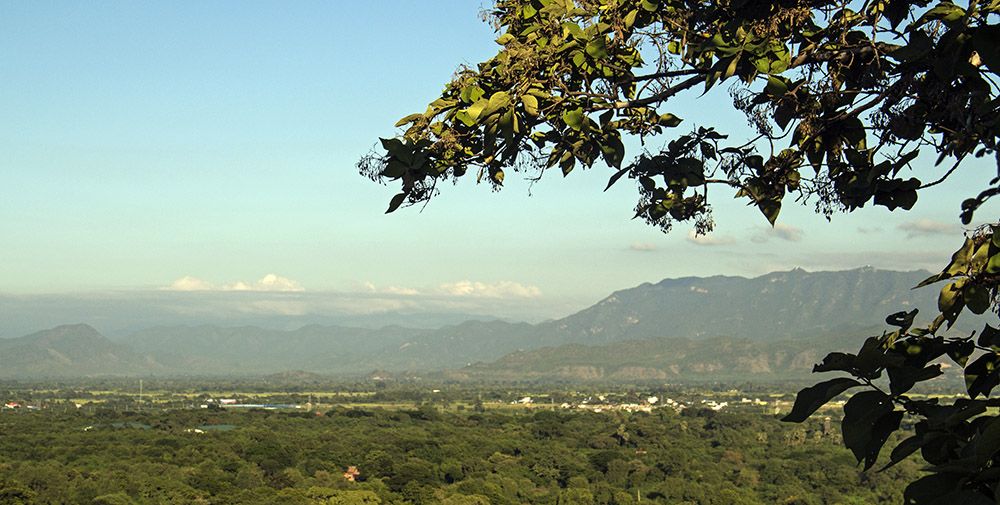
Shwenandaw Monastery
Near Mandalay Hill, you’ll find the Shwenandaw Monastery, a monastery made entirely of teak with beautifully detailed carvings. It was originally part of the Royal Palace. At the end of the 19th century the monastery was moved by King Thibaw to its current location. It is the only large building from the original wooden palace that survived the bombing during the Second World War. This makes it the only authentic part of the palace that can still be admired.
Other pagodas at Mandalay Hill
At the foot of Mandalay Hill there are two more interesting pagodas that are well worth a visit while you’re there. One of them is the Kuthodaw Paya. Here you will find the largest book in the world. The pagoda from the 19th century contains 729 white stupas on which you can read the full text of the Tripitaka, the holiest text of Theravada Buddhism.
The other pagoda is the Sandamuni Paya which resembles the nearby Kuthodaw Paya. Sandamuni contains the largest iron Buddha statue in the world.
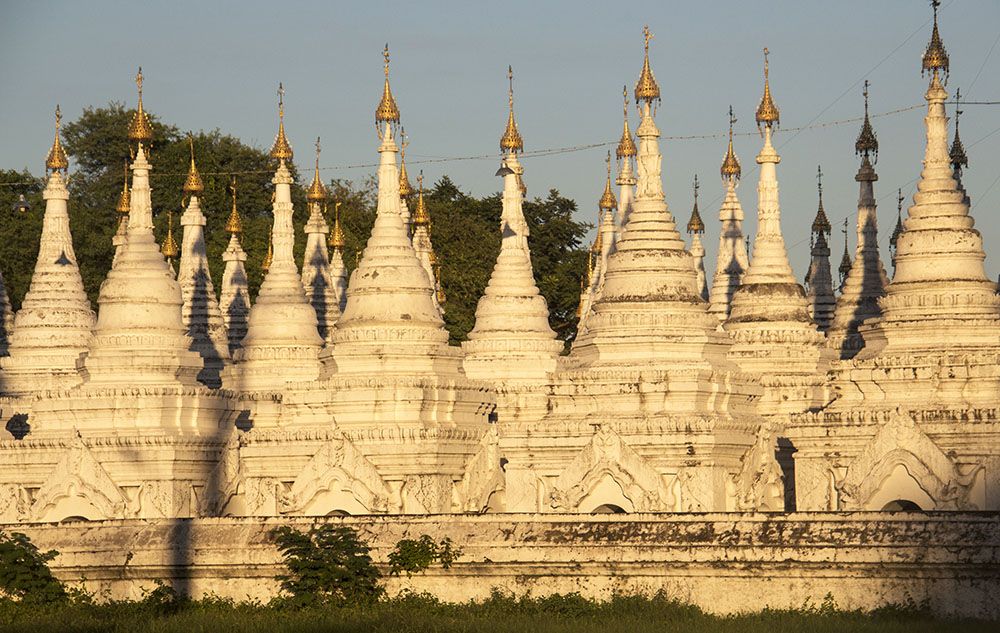
Sightseeing in the immediate vicinity of Mandalay
U Bein Bridge
The U Bein bridge is a pedestrian bridge in the village of Amarapura, just south of Mandalay. With a length of over 1.2 kilometres it is the longest teak bridge in the world. At sunrise and sunset many inhabitants and monks walk over the bridge… really a beautiful sight!
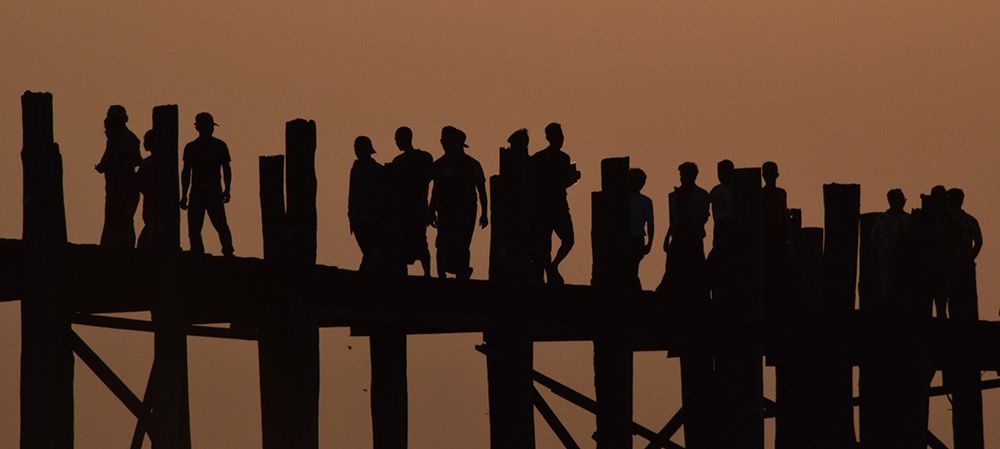
Mahagandhayon Monastery
Also in Amarapura is the Mahagandayon Monastery. This monastery is known for its strict observance of the Vinaya, the Buddhist monastic code. It is the most prominent monastic school in Myanmar. An impressive spectacle takes place every day as hundreds of monks gather for lunch.
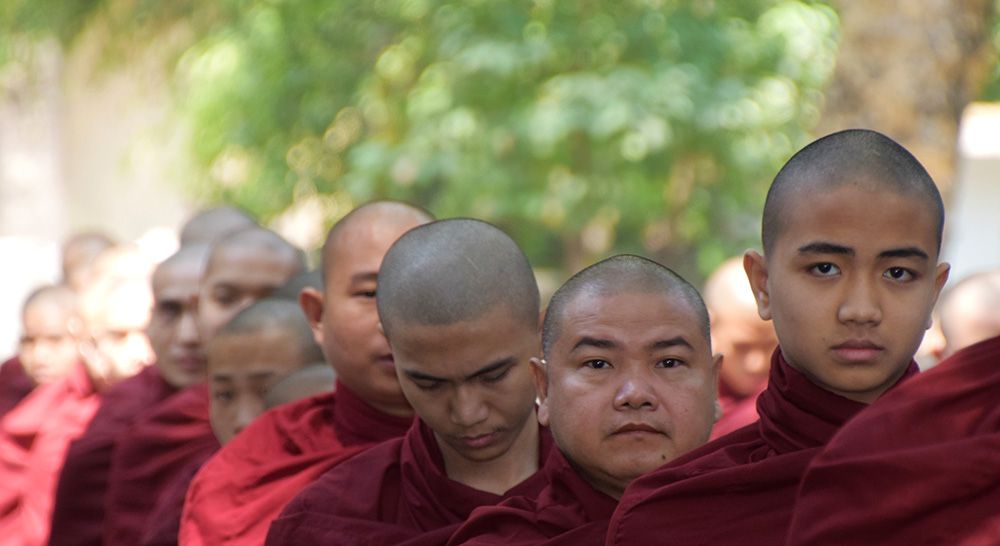
Mahamuni
Between Mandalay and Amarapura you will find Mahamuni, a Buddhist temple and an important place of pilgrimage. You have a beautiful view of countless temples with golden domes. In the temple, the Mahamuni Buddha statue (which literally means ‘the great sage’) is worshipped. Every day from 4:30 pm to 5 pm you can witness the ceremony where the face of Buddha is washed.
Yaedagon Taung
Yaedagon Taung, located in the village of Patheingyi about 6 kilometres east of Mandalay, was the first sport-climbing area in Myanmar. The climbing walls are surrounded by limestone cliffs, pagodas and monasteries. Under the song of Buddhist monks, you can see monkeys swinging from tree to tree. There are several climbing walls for both beginners and advanced climbers. But even if you don’t want to climb there, Yaedagon Taung is still worth a visit!
Mingun
A nice (half-) day trip is the boat trip to and from the village of Mingun northwest of Mandalay. You leave in the morning around 8:30 am or 9 am and you go back after lunch. In Mingun, you will find the Mingun pagoda and a little further on is the white Hsinbyume pagoda, which is considered one of the most beautiful temples of Myanmar.
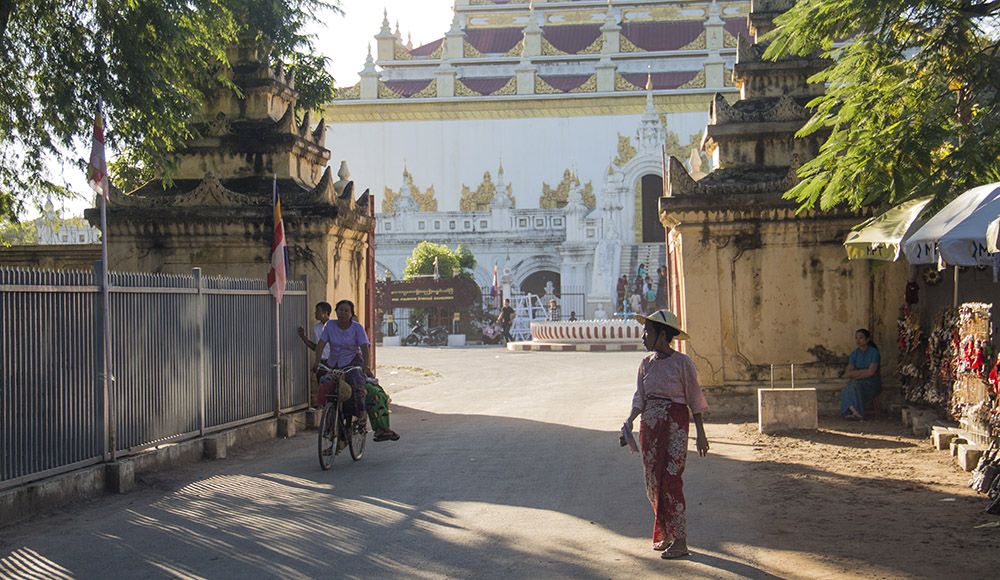
Visit to Mandalay: Practical matters
Best time to visit Mandalay
Mandalay has a semi-tropical climate. The best time to travel is winter from November to February. It is dry and pleasantly warm then. During the summer from March to May it can be particularly warm or hot. As Mandalay is located in the central dry zone of Myanmar, there is much less rain than in the tropical south even in the rainy season.
Accommodation
There is plenty of accommodation in Mandalay. Our advice is to look for something in the surroundings of the Mandalay Hill. You can reach most of the sights on foot. You also have quite a few nice restaurants just south of that area where you can enjoy excellent food.
Once, we stayed in the comfortable Yuan Sheng Hotel. This hotel has a nice roof terrace where breakfast is served in the morning. They really do have excellent cuisine. The less ideal location south of the Royal Palace is compensated because they have free rental bikes.
Where we also spent some nights is Hotel Nova. We like this hotel just a little bit better than the Yuan Sheng Hotel, also thanks to the very affordable car service. If you’re not a big cyclist, you can use a car with driver here for $20 a day to visit all the sights in the vicinity.
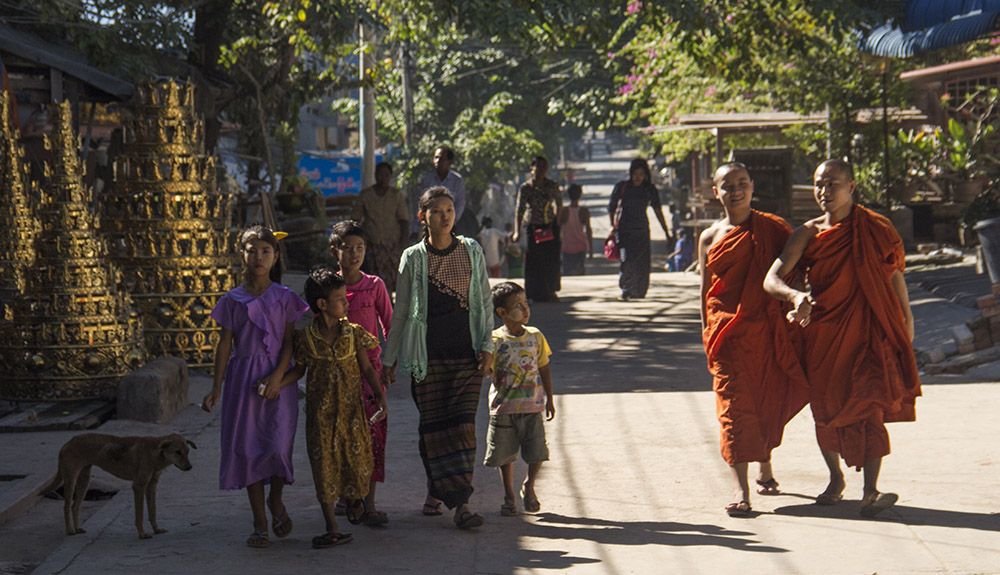
Transport to/from Mandalay
The former capital can be reached from Yangon by both train and bus. The train is the least comfortable and at 15 hours, the journey is obviously the longest. A much better option is the bus. 8 hours in comfortable VIP buses take you to Mandalay by night or day.
However, to get to Mandalay we took the plane to the city’s international airport. Although flying is significantly more expensive than travelling by bus, this option is especially interesting if you have a tight itinerary (like we had). We ended our trip through Myanmar in Mandalay and from there we took the plane directly to Bangkok. By the way, keep in mind that the airport is 45 kilometres away from the city. However, there are plenty of taxis and minibuses that can take you to the city centre via the easy-to-drive-on tarmac roads.
As mentioned before, Mandalay is an ideal hub for various tourist destinations because of its central location in the middle of a very large country. Transportation to and from these destinations is mainly via minibuses, though Inle Lake is also served by larger coaches. You can go to Bagan by boat as well. If you have enough time in your itinerary, this is an interesting option.
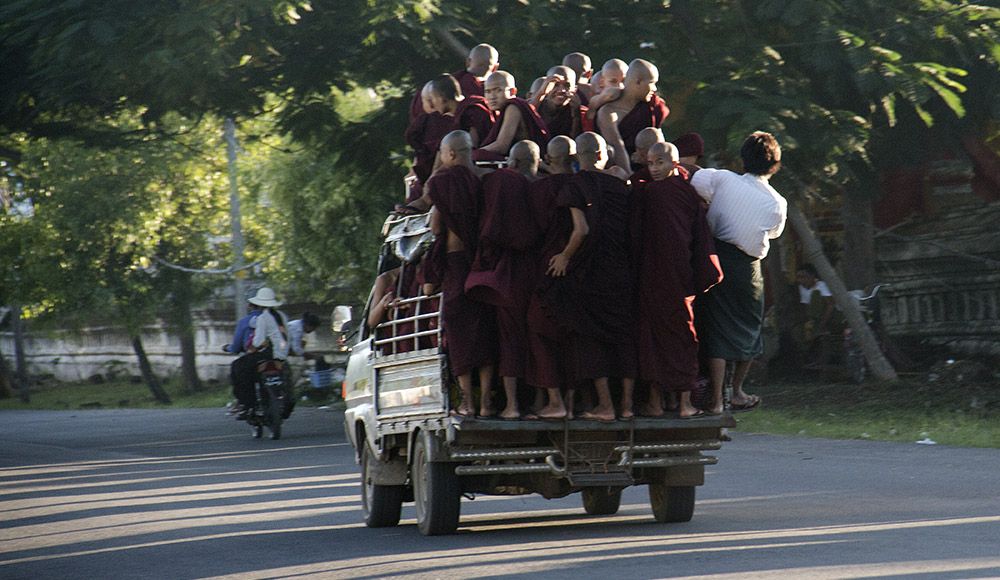
Moving around the city
Mandalay is a clear city by Asian standards. It didn’t take us much effort to navigate. If you stay in the area of Mandalay Hill (where most of the sights are located) you can also get to a lot on foot. If your accommodation is located west or south of the Royal Palace, then the bike is the most ideal means of transport in our opinion. At many hotels, you can use a bicycle for free or otherwise you can rent one for €1 or €2 per day.
In the evening, we usually took a taxi to get to one of the many lovely, cosy restaurants. They are not expensive but often difficult to get to. The handy app ‘Grab’ is a good solution!
